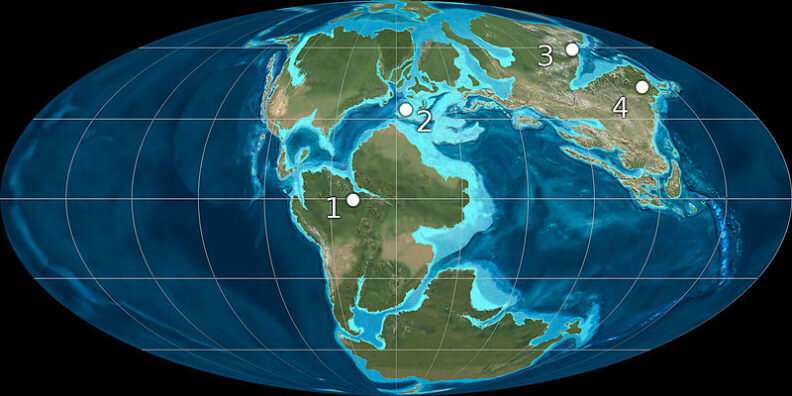Study finds billion-year superocean cycles in Earth's history

Curtin researchers believe that ancient supercontinents formed and then fell apart through alternating cycles spanning hundreds of millions of years that involved superoceans being swallowed and the restructuring of the Earth's mantle.
The research, published in science journal Precambrian Research, found the supercontinents assembled and broke up through alternating processes of 'introversion' and 'extroversion.'
The latter process caused supercontinent Rodinia to be turned inside out by tectonic forces, thereby consuming the surrounding superocean and leading to the creation of Pangea, the supercontinent that incorporated almost all of the Earth's landmasses.
Rodinia had formed via 'introversion' where the internal oceans formed during the break-up of previous supercontinent Nuna were consumed.
Lead researcher John Curtin Distinguished Professor Zheng-Xiang Li, from the School of Earth and Planetary Sciences at Curtin University, said the assembly and break-up of supercontinents occurred in alternating cycles of about 600 million years.
"In the past 30 years, researchers have discovered that Pangea-like supercontinents existed at least twice before Pangea, occurring roughly every 600 million years in what is known as the supercontinent cycle," Professor Li said.
"More recently, researchers studying Earth's geochemical records and formation of mineral deposits identified even longer-term variations in these cycles but it was not known why."
Professor Li and his team of Curtin researchers, funded by the Australian Research Council's Laureate Fellowship grant, recently discovered that the answer to this question could be found in the history of some of Earth's deepest oceans.
"We found that supercontinents appear to assemble through two alternating processes of extroversion and introversion," Professor Li said.
"More intriguingly, these two alternating processes determine not only whether the superocean survives, but also whether the circum-superocean Ring of Fire—like the present-day Pacific Ring of Fire – survives.
"If the Ring of Fire survives along with the superocean, then the Earth's mantle structure maintains a similar pattern to the previous supercontinent. If not, then the mantle gets completely reorganised.
"Such alternating ways of supercontinent assembly, along with the survival or regeneration of the superocean and the Ring of Fire, led to the presence of an Earth cycle twice as long as the 600-million-year supercontinent cycle and influenced the formation of some of the planet's resources."
More information: Z.X. Li et al. Decoding Earth's rhythms: Modulation of supercontinent cycles by longer superocean episodes, Precambrian Research (2019). DOI: 10.1016/j.precamres.2019.01.009
Provided by Curtin University




















